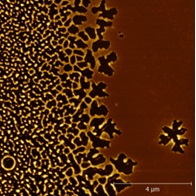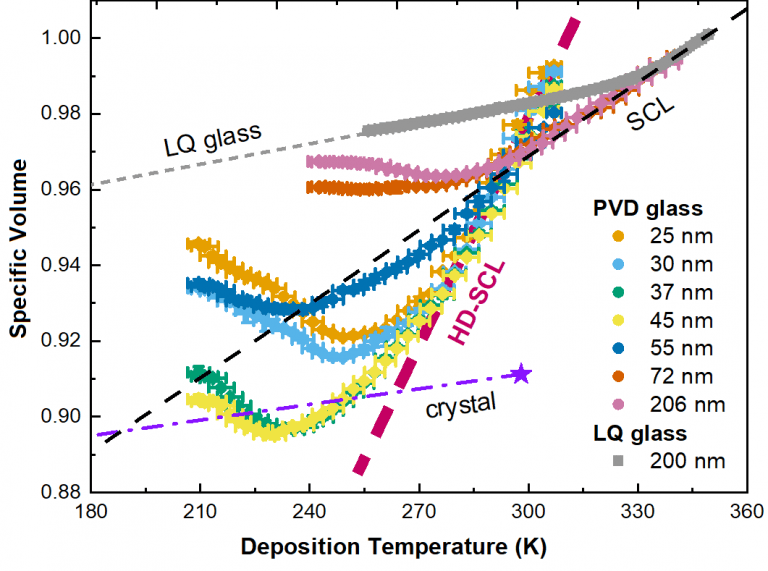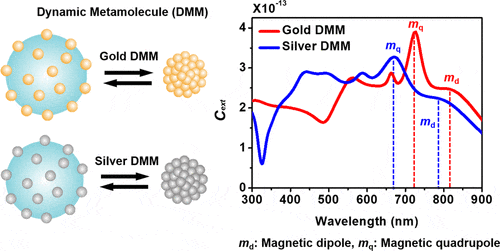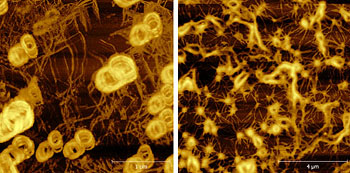Physical Chemistry, Materials Chemistry, Nanoscale Science and Engineering
- B.Sc. Physics, Sharif University of Technology, Iran 1999
- M. Sc. Physics, Sharif University of Technology, Iran 2001
- Ph.D. Physics, University of Waterloo, 2007
- Post-Doctoral associate, Chemistry, University of Toronto, 2007-08.
- NSERC Post-Doctoral Fellow, Chemistry, University of Wisconsin-Madison, 2009-11.
Overview
Our group studies the effect of nano-confinement and interfacial interactions on the structure, dynamics, and other properties of nanostructured materials. Materials behave differently on surfaces, interfaces, or small length scales compared to their bulk properties. Understanding such differences are crucial in many technological applications where materials are constrained in nanometer size spaces, such as organic electronics, polymer nanocomposites, and biomolecular drugs. One can take advantage of such differences to produce novel materials, such as exceptionally stable glasses, fire-resistant composites, or magnetism in the optical domain. In biological systems, most of the dynamics occur in nanometer size proximity of surfaces and interfaces, and understanding the role of interfacial interactions in their dynamics is key in predicting their function. We focus our efforts on understanding the fundamental physics of confinement phenomena and use this knowledge to design novel materials.
Glass Physics at Nanoscale:
Glass dynamics are governed by out of equilibrium thermodynamical processes. These systems can be dramatically affected at the nanoscale and at interfaces. For example, free surfaces can enhance the dynamics by 6–8 orders of magnitude and induce wetting transitions at locations 10–30 nm deep inside the glass. The picture shows a film with a gradient in thickness from left to right, where on the left side, it behaves like a liquid and dewets, while on the right side it is glassy and therefore smooth. The film’s thickness in the mid-range is about 30 nm. In contrast, extreme nanoconfinement can dramatically reduce the structural entropy and slow the dynamics of the system, increasing its glass transition temperature, Tg, and thermal stability. By investigating the physical properties of nano-sized glasses of polymers, organic molecules, and inorganic systems, we elucidate glass transition physics and probe the nature of phase transitions in glassy systems.

Surface Mediated Equilibrium and Stable Glasses:
The enhanced mobility of the interfacial layer allows us to produce near-equilibrium glasses at temperatures well below the bulk glass transition temperature, Tg, by means of physical vapor deposition (PVD). Listen to Richard talk about the liquid to glass transition here. Exceptionally stable glasses are formed when the substrate temperature during PVD is maintained just below the glass transition temperature. Hear Sarah talk about this process here. We study structure/property relationships in rationally designed glass-forming molecules and correlate their free surface dynamics and chemical structure to the packing of stable glasses. Check out our database of molecules here. We study morphology and the kinetics of PVD films during formation, in situ, as well as their properties after formation. These studies provide information on mechanisms of rapid aging below Tg and stable glass formation. We have discovered that in thin films, a new high-density glass phase can be accessed upon vapor deposition, which is not accessible in bulk (shown in the picture). Yi gives a 3 part talk on much of his work on this subject, starting here.

Novel Emergent Optical Properties in Disordered Nanoparticle Clusters:
Using simple synthetic routes we can produce nanoparticle clusters composted of a dielectric core with variable size decorated with randomly packed nanoparticles of noble metals with various shapes and sizes. Exceptional optical properties, such as higher-order quadrupoloar scattering and magnetic dipole plasmons are observed in these nanoparticles. These unique properties emerge from the inherent disorder in the structure of these objects. We explore the optical properties of these clusters, using various theoretical and experimental tools. Our in-situ experimental techniques allow us to study the properties of composite meta-materials formed by these particles and other heterogeneous composite systems. We can directly monitor selfassembly and emerging optical properties due to various stimuli and compare them with predicted behavior by theory and simulations.

Surface Mediated Self-assembly of Amyloid Aggregates:
Surface self-assembly provides an alternative pathway for amyloid aggregation that is not available in bulk solutions. We use high-resolution atomic force microscopy and other imaging techniques to study the adhesion and diffusion of peptides on various surfaces and their role in facilitating amyloid fibril formation through self-assembly routes. We also use our exceptional capabilities in high-resolution imaging to study the conformation of amyloids formed under various conditions in aqueous conditions.


